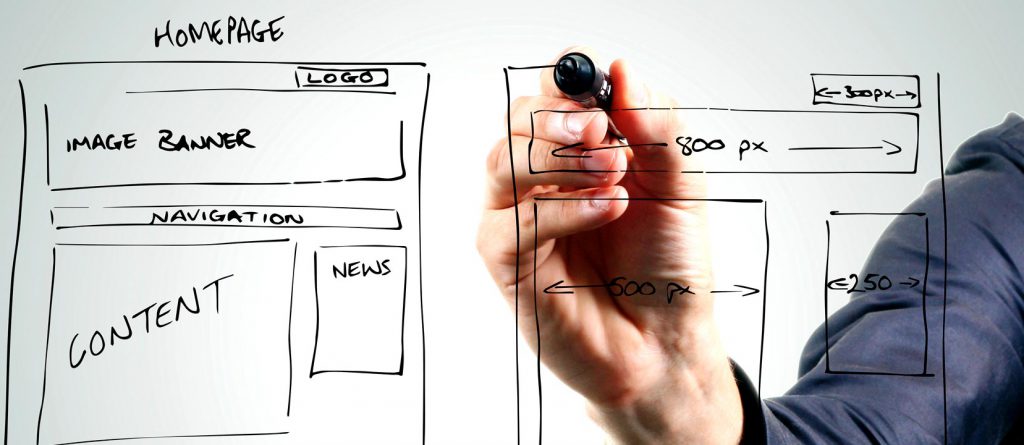A lot of planning goes into the design of a website. There are many factors to consider and keep in mind that influence the design process. From beginning to end there are three key points we use as a basis for every website we design.
1. What type of business is the website representing?
When we begin planning a website we first consider what type of business or person the website is for. A website has to best represent the business/person in a visual and informative manner. The layout, colours and typography will be influenced by certain characteristics of the business/person.
Layout
Some businesses will need websites that are information heavy and only need to present the content in a visually pleasing layout. Whereas some may need high-res images and flashier visuals to focus the users attention on a product or service. These types of characteristics define the layout of the website and how the content is presented to the user.
Colours
The colours are usually based on the business type because of the feelings associated with certain colours. Colours subconsciously convey a message to users. What are the colours of your website saying to your users?
Typography
What font(s) should you choose? How big should the titles and body text be? These are questions we ponder very early in the design planning stages, because of the visual impact of typography, and how it compliments the feelings associated with the website’s colours. Choosing a font for a website should be based on how the style of the font matches the business, the person or the product.
2. Who is the target audience?
Depending on your website’s/business’ target audience certain elements throughout a website need to be catered to that target audience. Depending on the user demographic being targeted, whether by age, gender, interests, etc., the layout, colours, typography and user interface objects of the website need to be catered to the user base. We like to made a broad generalization of any user demographic by determining whether or not the majority of users in the demographic are familiar with website’s and conventional design trends.
If your website appeals to users with a good understanding and familiarity with user interfaces, then all design conventions can be used on the website, without needing extra labels or text to inform the user of it’s purpose. On the opposite spectrum where a user demographic may not have the same familiarity with website interfaces and what an element represents. The hamburger menu icon is a perfect example. Long time internet or app users understand what the hamburger menu icon is for, revealing the menu! Whereas others unfamiliar with the icon will need the word “Menu” beside it to understand that it is a clickable object that opens the website’s menu.
3. What is the website’s goal or purpose?
This is a factor that goes hand in hand with the type of business the website represents. Different businesses, depending on what they are selling (products, services or themselves), will have their own specific purposes or goals they want their website to achieve. The purpose can have a profound effect on the layout of the website based on what the design needs the users to focus on.
Some website’s only need to focus on presenting information about the business or person to users in a layout that follows website conventions. These types of websites allow for a broader range of layouts to be used because the focus is information heavy. Whereas an E-commerce website needs to focus on the products and the product information with the information about the business being secondary. The layout for an E-commerce website would focus on showing off the products with high res images and highlighting the purpose or benefit of buying that product.
Conclusion
We have learned to stick to these basic questions because it allows us to consistently design website’s that have great layouts, appropriate colours, the right typography and create a user friendly experience that showcases your business or product.

